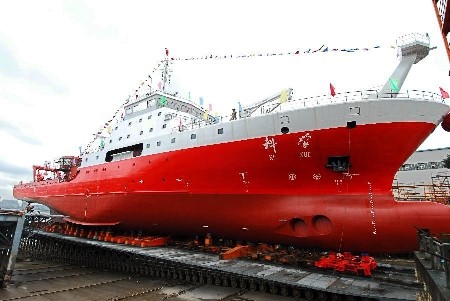The country’s most sophisticated research ship Kexue has returned on Friday, March 13, to the city of Qinghao in Shandong Province, ending its second research expedition in west Pacific.
Kexue, which means "Science," started its two expeditions to the Yap Seamount sea area in early December which reached a total of 101 days.
The Yap Seamount is said to be rich in mineral and has a diverse ecological system.
Li Tiegang, deputy head of the Chinese Academy of Sciences Institute of Oceanology, said that around 120 seamount animals living in depths between 260 and 2,000 meters were collected together with a large number of various rock samples.
According to the report, the Chinese research ship is 100 meters long and 17.8 meters wide, with a gross tonnage of 4,711. It has cruising capacity of 15,000 nautical miles with a top speed of 15 knots. Its crew is composed of 80 personnel with provisions for 60 days of travel.
Dong Dongdong, chief scientist of Kexue's second expedition, said that their mission is focused on deep-sea environment and ecology, which aims to gain more understanding of the seamounts.
Seamounts refer to mountains rising from the bottom of the ocean without reaching the water surface.
The scientist said that knowledge regarding the mountains in the ocean will also provide more knowledge on China's climate and natural disasters, as well as shed light on the interaction and processes between the country's offshore waters and the ocean.
Kexue made its first expedition in April last year to study the Pacific currents, regional climate and deep-sea ecology. A total of 46 scientists and technical staff joined the expedition which carried out marine geophysical surveys and biological sampling.



























